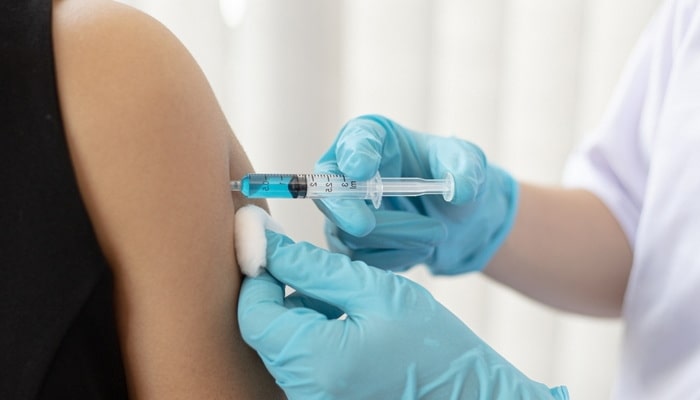Зміст
Poliomyelitis is a disease known as “Heine-Medin disease” after the two doctors who first described the disease. Polio is an acute viral disease that damages neurons and leads to paralysis, paresis and breathing problems. What are the symptoms of polio, the history of the disease, and what are the current measures to prevent a recurrence of the polio epidemic?
Poliomyelitis virus – symptoms
There are three forms of the disease, which can have different severity and types of symptoms. The first type of polio is an asymptomatic infection, it is the most common and no specific symptoms of the disease are observed. This is dangerous because during this period a sick person can unknowingly transmit the disease to other people.
There is non-paralytic polio, which is characterized by a more severe flu-like condition. Pain, increased body temperature, fatigue, nausea are noted, but there are no symptoms of damage to the nervous system.
Nonparalytic polio is the most serious type of the disease. This can cause permanent damage to the nervous system and muscle paralysis. Symptoms of non-paralytic polio include:
- Heat,
- Headache,
- Muscle pain,
- muscle weakness,
- Tingling sensation in the legs,
- Asymmetrical paralysis,
- Meningitis (rare).
This most severe type of polio can cause difficulty walking and even paralysis of the respiratory muscles, leading to death in extreme cases. If paralysis occurs, there is a risk that the patient’s condition will improve after the disease has passed, but will worsen after 15–40 years. This is the so-called “post-polio syndrome”, which is mainly associated with the return of muscle weakness and pain.
Heine Medina’s disease – causes
Poliomyelitis is a disease caused by infection with the poliovirus (enterovirus family). Infection can occur through contact of a healthy person with secretions or secretions of a patient (saliva, feces – the virus multiplies in the digestive system, and a patient with polio excretes it in the feces). An additional risk factor for infection is impaired immunity.
Heine Medina’s disease – treatment
Unfortunately, there is no specific treatment regimen for polio. Treatment for polio is not completely effective and is aimed at relieving symptoms and preventing complications. The most effective “cure” for polio is the vaccine. In a situation where we are already dealing with a developed disease, the elements of therapy are:
- Managing symptoms
- Physiotherapy and rehabilitation,
- Treatment of secondary symptoms (e.g., bone and joint deformities),
- Use of a respirator.
Poliomyelitis vaccine
As mentioned, polio vaccination is the best form of protection against this disease. Currently, the most popular vaccine is Boostrix. Poliomyelitis, diphtheria, tetanus, whooping cough are a group of diseases that this specific complex drug counteracts. Polio vaccinations were initially administered with inactivated drugs (polio IPV) and then with an oral “live” vaccine (polio OPV, attenuated vaccine).
Polio IPV
According to current recommendations, IPV vaccine should be administered 3–4 times. Most often, vaccinations are given at 2, 4, 6–18 months of age and at the age of 4–6 years. On the other hand, adults do not need to be vaccinated against polio because they were already vaccinated as children. However, it is worth thinking about this question when, for example:
- We travel a lot, especially to distant countries,
- We work in laboratory and/or healthcare settings and come into contact with viruses.
Iron lungs – polio
Because paralysis of neurons in the brain stem or spinal cord in polio could lead to dysfunction of the respiratory muscles, patients with breathing problems were often placed in so-called “iron lungs.” This is a device that was intended to support respiratory processes in people who have lost this ability. The iron lung is a special “cylinder” connected to a respiratory control system that regulates breathing and helps provide the patient with the right amount of oxygen. Now we have more advanced technologies and iron lungs in the form in which they were before are no longer known to medicine. However, it should be emphasized that before the polio vaccine was invented and the world was swept by a massive epidemic of this disease, many patients benefited from this medical equipment.
Heine-Medin disease – inheritance
Polio is transmitted through airborne transmission and can cause permanent disability. It is very contagious, and we can get sick from contact not only with the saliva of a sick person, but also with his feces. This is not a genetic disease that is passed on from generation to generation. The way to avoid this is vaccination against the poliovirus.
